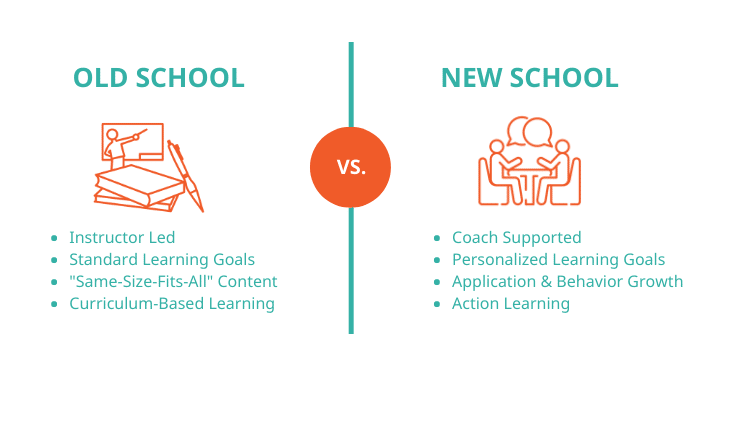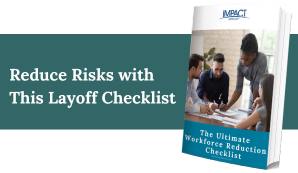Your talent pipeline may not be as robust as it once was. We’re all hearing about today’s shrinking talent market. And we’re still rebounding from The Great Resignation or Reshuffle of 2021, when 47.8 million workers quit their jobs. That’s an average of four million each month and the highest on record.
Exceptional talent is hard to find – and keep. That’s why your company should be proactive about building — or rebuilding — its strong talent pipeline.
Why Talent is Draining from Your Pipeline
According to the Society of Human Resource Management (SHRM), the “quitter’s market” can be attributed to the global pandemic, vaccine mandates, and a strong candidate market, but other factors must be taken into consideration as well. Such factors include demographics, the desire for purposeful careers, and the lure of learning and growth opportunities elsewhere.
Demographics
More than a third of the workforce consists of Baby Boomers who will be retiring soon. Gen Xers and Millennials will factor prominently in today’s talent pipeline. However, many Gen Xers are reducing the number of hours they work to care for both children and aging parents. And many Millennials simply aren’t ready.
Purposeful Careers
Now more than ever, people want to feel valued and find purpose in their work. Corporate culture comes from the top down. Many of today’s leaders rose to the top back when managers gave much less thought to the wellbeing of their employees. In fact, consideration for the human factor of business was often regarded as weak. But today’s emerging leaders want to know how their role fits into a meaningful, big picture. If these needs go unmet, they’re at a higher retention risk.
Learning & Growth
According to a study conducted by 360Learning, 57% said they’d leave a job if they felt they weren’t given enough professional development opportunities. LinkedIn’s 2022 Workplace Learning Report shares that 79% of learning and development professionals agreed it’s less expensive to reskill a current employee than it is to onboard a new one.
So how do you retain, engage, and upskill your current talent to fill the gaps in your talent pipeline?
Here are Eight Ways to Retain Leaders & Strengthen Your Talent Pipeline
1. Identify Your Emerging Leaders
Do you know who your high-potential employees are? More importantly, do they know they are regarded as high-potential talent? Imagine losing a star employee to the competition simply because she didn’t see an obvious path to promotion. Great performance reviews are one thing, but good managers should also establish clear objectives for growth with their employees. Using a systematic approach to talent management, such as the 9-Box Matrix, will help you analyze employee performance and identify future leaders.
2. Light the Pipeline Path
Competency-based career paths should be visible to your entire workforce to establish a culture of transparency and inclusivity. This will open your talent pipeline to those who might not be on the radar. Manager identification is important in succession planning, but self-nomination is, too—and this isn’t possible if workers aren’t aware of opportunities. Not everyone will be a prime candidate for career advancement, and that’s okay. Setting expectations early is necessary to ensure you have the right person in the right seat at the right time.
Determine potential through regular performance measurement and training opportunities, but don’t assume everyone will be interested in the management track, even if their manager thinks they should be. Some workers excel at what they do, but that doesn’t mean they have the desire to lead. Gauge interest by asking your employees directly, either through one-on-one meetings or internal surveys.
3. Put an End to “Bad Boss” Exodus with New Leader Coaching
Is it true that people don’t leave companies, they leave bad bosses? According to SHRM’s report on toxic workplace cultures, 76% of employees say their manager sets the culture of their workplace, and 58% of those who left a job say their managers were the main reason. The trouble is, we often promote functionally competent people into management without adequate coaching on “what to do when.”
When managers aren’t sufficiently prepared to tackle the human side of management, they can create unnecessary stress. One bad manager can create a stampede of resignations.
Solution? New leader coaching programs prepare people to manage others and help them build EQ. Don’t burden your new leaders with hours and hours of content-based training – much of which won’t be relevant in the near term. Instead, think about combining less curriculum with more coaching.
A coaching program for new leaders feels more supportive and time sensitive. While training often emphasizes knowledge, it’s difficult for a manager to learn what to do about 100 different possible scenarios. Coaching is less about “what if” and more about “what now.” The coach can address what the manager is dealing with in the moment. The coach can assign additional curated content to support relevant learning needs.
Most importantly, if your new leader development emphasizes the value of emotional intelligence, these skills will be broadly institutionalized across the organization. No more leading through brute force, pushing unreasonable work hours, and other toxic behaviors that erode retention, and ultimately, business results.
4. Create Programs for High-Potentials
In addition to a new leader program, you might consider a formal program for existing leaders and other high potentials. Rewarding top talent through increased pay and benefits is important, but you have to broaden their horizons to keep them motivated and engaged.
When you establish formal development and coaching programs that clearly identify potential routes to more senior roles, you will underscore your commitment to employee growth.
Superstar employees crave challenging assignments to help them reach new heights. Create programs that offer specific learning opportunities to send a clear signal that they have a solid future with your company.

MJ Electric provides a case study of how to get positive returns from leadership development programs. Each year, a cohort of 12 to 14 people participate. Capstone projects are a key component. Each participant spearheads a business project that executives must first approve. “We’ve actually started new business lines as a result of the capstone work,” says MJ Electric’s VP of Human Resources Steve Feira. Coaches are the key. “Coaches give meaningful, digestible feedback,” Steve acknowledges. “They tell the participants when they’re veering off course. And in some cases, the program participants say they’ve never before been coached to this extent of having such actionable feedback.”
5. Tackle Generational Differences
It’s no secret most employees want more of a work/life balance, and Millennials are leading the pack. As a result, a lot of companies have changed their workplace policies to offer greater flexibility. Try implementing more telecommuting, compressed work week, and job-sharing options to retain your Gen X and Millennial workers. Project-based contracts and part-time hours will help your Baby Boomers transition out of the workforce while making room for more junior employees to take up the torch.
6. Promote a Highly Visible Culture of Learning
In the age of information, it’s important for companies to be transparent. Creating coaching/mentoring and development programs is key, but it’s equally important that your entire workforce is aware of them. Send regular email communications to promote these initiatives and detail retirement plans for key roles. Establish an internal website/intranet for training opportunities and open positions. Discuss learning and development regularly in both one-on-one and team meetings to make learning a natural and expected part of each employee’s day.
7. Diversify Your Talent Pipeline
At its core, diversity, equity, and inclusion (DE&I) are essential for ensuring your employees feel safe and valued. And it’s good for business: McKinsey & Company reports companies with more diverse executive teams regarding gender and ethnicity are more likely to have above-average profits—25% and 36% more likely, respectively.
It’s particularly nonsensical to overlook diverse talent in a tight job market. However, in large organizations, most senior roles are still held by white males. Whether it’s conscious or unconscious, bias may cause some men to seek out similar individuals to mentor or to fill openings. That’s why communicating clear pathways to promotion and other opportunities shouldn’t be the sole responsibility of your existing management team.
Facing diversity issues head-on will go a long way toward building a more robust talent pipeline. And let’s face it, word gets around. You won’t get the most qualified candidates or fill your talent pipeline with new skill sets if your reputation suggests there isn’t room for everybody.
8. Manage Your Pipeline with Fierce Intention
Take a businesslike approach to succession planning and managing your pipeline. Use the Six Sigma DMAIC (Define-Measure-Analyze-Improve-Control) model for inspiration. Define your objectives—what seats will need to be filled and when? Measure today’s pipeline and analyze the data. Make sure you practice targeted recruiting and networking to ensure you are attracting diverse candidates. Then use some of the suggestions above to improve your processes. Finally, define KPIs to measure success and control your outcomes.
Your Talent Pipeline Won’t Fix Itself
According to SHRM, 49% of workers have thought about leaving their current organization, so it’s only a matter of time before the Great Resignation negatively impacts your talent pipeline.
Share and discuss this blog post with others. What does your team think about the key practices outlined above? One thing you know to be true: Your competitors are working hard to lure away your best talent. It’s time to actively assess your talent pipeline and take the appropriate steps to attract and retain tomorrow’s leaders.











